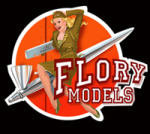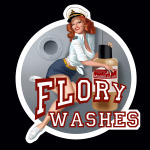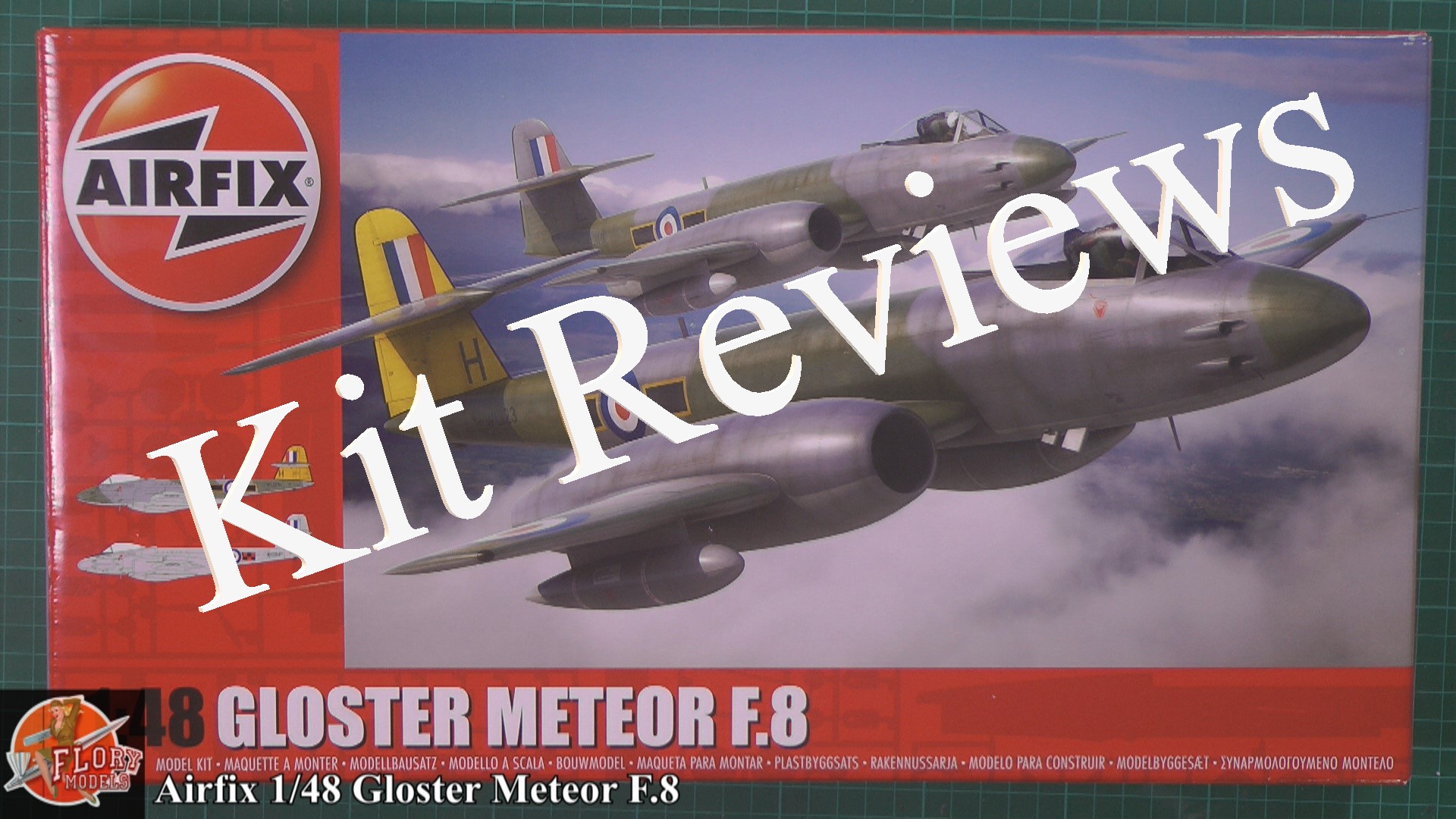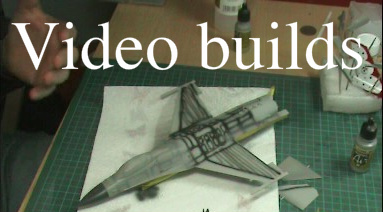1/48 Focke Wulf FW-190 D-9 (Italeri 856)
‘Black 1’ - W Nr.210972 – 5./JG26 (II.Gruppe) Gerhard Muller-Berneck – Lister, Norway, May 1945
Tamiya Extra Thin Cement
Modelsforsale.com Sanding Sponges
Tamiya Liquid Surface Primer
Mr Surfacer 1200
Olfa P-Cutter
Johnsons Klear
Micro-Set & Micro-Sol decal setting solutions
Bare Metal Foil – Matte Aluminium
Pacer Zap-A-Gap CA glue
Talcum Powder
Tamiya Making Tapes
5amp Fuse Wire
Low Odor White Spirit
Isopropyl Alcohol
Tamiya X-20A Thinners
Paints and Weathering
Tamiya XF-1 - Matt Black
Tamiya XF-2 - Matt White
Tamiya XF-52 Flat Earth
Tamiya XF-63 - German Grey
Tamiya XF-69 - NATO Black
Gunze Sangyo H70 – RLM02
Gunze Sangyo H69 – RLM75
Gunze Sangyo H423 – RLM83
Vallejo Model Color 907 – Pale Blue (RLM76)
Black, Burnt Umber, and Raw Umber Artists Oil Paints
This is the Italeri 1/48 Focke Wulf FW-190 D-9. This kit has been doing the rounds for a number of years, originally issued by Trimaster, and subsequently being boxed by Dragon, Italeri and Revell. The original Trimaster kit contained a number of parts that were provided on photo-etch sheets, but this Italeri version doesn’t have these. Parts are well moulded with very nice and fine recessed details, although the plastic is a little soft. There are a total of 97 parts in the kit, on 7 plastic sprues, and 1 clear sprue.
Rather than use the kit decals I have opted to use a replacement aftermarket set from EagleCal. The option chosen is the last one depicted here, "Black 1"
Construction
The starting point on the kit was the cockpit. It is nicely detailed although there are no seatbelts provided in any way. In order to get around this I made some simple belts using Tamiya masking tape, and some 5 amp fuse wire bent to shape. As it turns out, they were a little overscale, but were sufficient just to add some detail into the cockpit seat. The cockpit was painted overall using Tamiya XF-63 and details picked out by drybrushing with a matt black. Certain points were then picked out using some colour where necessary.


Once the cockpit is all finished, construction moves towards the fuselage and wings. The undercarriage bays are provided as a single piece that fits onto the lower wings. I had some difficulty in getting it to sit flush on both sides in there and it required clamping for a while, although I think this was an issue with my kit, and not in general. Once the bays are fitted then the upper wing halves can be fitted.
I chose to deviate a little from the instructions at this point and leave off the exhausts during the build. I figured that it would be easier to paint and weather both the fuselage and the exhausts separately and add them at the end. The fuselage halves are put together and the cockpit assembly is added from underneath. At this point it is worth looking at the join between the fuselage and the wings. When dry fitting the parts there was a large gap at the wing roots, and would need some remedial action. As it turns out, the fuselage just needs to be pushed outwards towards the wingroot to achieve an almost perfect joint. This can be done by inserting something in behind the cockpit tub and pushing outwards while glueing, or by cutting some scrap sprue and adding it to the inside of the fuselage as a spacer to push the sides outwards. I chose the former method and used a dab of CA to quickly achieve a clean join, then ran along some Tamiya Extra thin cement to reinforce it.
Next stop was to fit the gun cover to the top of the fuselage. For some reason the left hand side of this fitted perfectly, but the right had an annoying gap in an area that was difficult to work with.

I chose to attempt to fix this using a little CA mixed with talcum powder in order to build up the gap. This ended up an easy fix and required little sanding away of the details surround it.

At this point I painted up the oil cooler parts and chose to use the open cowl flaps. The kit does provide the option of both open and closed cowl flaps. Once done the whole front cowling was mated to the fuselage with no problems at all. The machineguns on the nose are represented by stick of plastic that looks a little bland, and nothing at all like a gun. As only a small part protrudes from the gun bay I decided it would be sufficient to just drill out a small hole in the end to look like a gun barrel. Using a small 0.4mm drill bit in a pin vice, I drilled out about 5mm of the end of the gun.

As the detail on the canopy framing was extremely fine, I used some Bare Metal Foil as a masking medium for it. I was able to apply this onto the canopy and cut to the fine frame detail. Tamiya tape would have been thick enough to prevent these frame lines showing through. Once done, the front screen fitted flawlessly to the fuselage and needed no further work.
Painting
I decided to leave off all of the undercarriage parts and other smaller ones that could have been damaged or broken during handling, and moved on to the main painting. The first job was to apply a primer of thinned Mr Surfacer 1200 sprayed all over. This would highlight any areas that were in need of further attention, such as seams and general surface details. As it turned out, they were all acceptable and I was able to begin a pre-shading of the panel lines and detail using thinned Tamiya XF-63. I opted for grey as it is far less stark than black shading.

Tamiya XF-2 Flat White was sprayed onto the rear of the fuselage where the Reich defence stripes would be, and masked up in the required areas. The undersides and lower fuselage were then painted in RLM76 using Vallejo Model Colour, leaving a small amount of the pre-shade showing through.


The camouflage was then applied freehand using Gunze Sangyo Acrylics. The colours being RLM75 & RLM83. Mottling was applied using very thin paint, and low air pressure of 10psi or less. Each of the camouflage colours were applied, and then shaded with lightened and darkened mixes of the original colours. A final very thin coat of each colour was then lightly sprayed over the top to blend it all together.


Final painting tasks were to mask up and add the black part of the Reich defence stripe, and the black panel around the Exhausts. For this I used Tamiya XF-69 NATO black as it wasn’t quite as stark as a matt black, and would work slightly better with the weathering to come later.
As is my usual practice I sprayed a couple of fine coats of Johnson’s Klear as a gloss finish for decalling, and also as a protective layer for the oil wash to come.
The decals from EagleCal were extremely thin and behaved impeccably with the Microscale decal solutions. They settled well into all of the panel lines and looked really good.


With such fine panel line detail I was drawn towards attempting an Oil Wash for the first time. Obtaining some artists oil paints and white spirits, I mixed up a wash from Burnt Umber and Black paint. Using just a small amount of the oil paint this was mixed into some white spirits to make a dirty thinner mix. A fine brush was then used to touch the wash to the panel lines, and it ran smoothly around the detail, showing it up nicely without overdoing the effect (In my opinion anyway!).



The wheel wells were then sprayed with RLM02. I find that masking the outer part of the undercarriage bays and spraying after the main colour is done is far easier than doing this the other way around.
Whilst waiting for the oil wash to dry, I moved on to painting up the small parts. The props come in separate parts but locate very nicely to the spinner centre, and line up easily. Once the spinner cap is attached I attempted to apply the spinner decal. This was very awkward and although it looks OK, it did break into several parts with my pulling and pushing on it. With copious amounts of Micro-sol applied in several coats, it finally stayed down properly. The undercarriage legs were sprayed in RLM02 and a Burnt Umber oil wash added. I decided to use some Bare Metal Foil on the oleos, and think this works well. The leg was measured with some calipers, and an appropriately sized piece of foil was cut and gently rolled on to create a more realistic look than paint.

Once the wash was dried I applied a matt coat using Xtracrylix Flat Varnish thinned with Tamiya X-20A Thinners. This sealed in the wash and decals, and also provided a flat surface on which to add some weathering. Again using artists material, this time pastels, I added some general dirt and stains to the aircraft. Scraping the pastels with the edge of a scalpel blade provided a very fine dust from the pastel that can then be gently applied to the model. Using repetitive brush strokes where needed, a small amount of dust goes a long way and produces a nice effect. It is always best to build this up slowly, rather than attempting to do it with just a few strokes and a lot of dust!
Some chipping was also added to the wing leading edges, and the trailing edges and top area where the pilot and mechanics would walk. A silver pencil was used to tap onto the areas in a random fashion to create the small chips, and applied normally for any larger ones where required.
Oil leakage from the cowling was reproduced by dotting a tiny spot of oil paint at the start, and drawing this back with a soft brush dipped in white spirit. When done carefully this can produce a nice result.





The final part of the weathering process was to apply some exhaust staining to the fuselage sides. I did this by using a very thin mix of Tamiya XF-1 Flat Black, and Tamiya XF-52 Flat Earth. Using a low air pressure this was gently misted on and built up in multiple layers to create a strong exhaust stain.
The undercarriage was then added to the fuselage, although the fit was very vague and they wanted to sit too vertical for the FW-190, which leaves the model looking like it’s up on tip toes. With a little reference I was able to apply the legs at roughly the correct angles without much difficulty, although the retraction arms now don’t reach. I used CA and accelerator in order to ensure that they were fixed quickly into position.
To finish off the build the spinner and prop assembly was push fitted as this was sufficiently tight, and the canopy was unmasked. I have not fitted the canopy yet as I’ve not found a suitable material that gives the characteristic droop of the Dora’s antenna wire between the open canopy and tail. That will be completed once I have some suitable thread.
Conclusion
This is an extremely nice kit that goes together without any real dramas. The only issue being the stretching out of the fuselage sides to join the wings properly, which is very easily overcome. I think some of the small issues I had with small gaps were unique to my kit. It builds into a really nice representation of the Dora and a worthy model straight out of the box with little effort. I certainly don’t think the kit deserves the reputation for being tricky that it has been given over the years.
Karl Robinson, February 2009.










Tools and Sundries used










